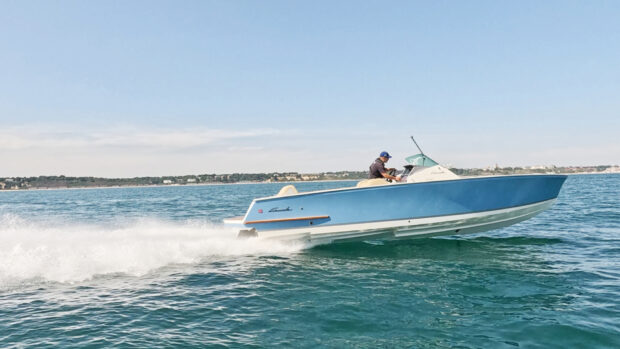With winter approaching, now is the time to think about outboard maintenance. These tough little workhorses don’t need much in the way of maintenance but they all suffer from lack of regular use and a few simple steps now can prevent a lot of frustration next season...
Firstly, store it correctly; older 2-stroke outboard engines can usually be stored at just about any angle, provided the fuel is turned off and the breather is shut, but 4-strokes either need to be stored upright or laid down on the correct side to prevent oil running into the wrong parts of the motor.
Some (but not all) engines have special little lugs to rest on but if in doubt check the owner’s manual as it’s not always obvious. Modern engines like clean, fresh fuel. It sounds obvious but these days petrol contains up to 10% bio-ethanol, which has a shorter shelf life, so try to use Premium E5 rather than regular E10 when filling up.
My 20-year-old 4-stroke does not run reliably on E10 fuel as it gums up the carburettor. Above all don’t expect the fuel to last from one year to the next, as it will go stale over the winter and any fuel left in the engine’s filter, pump and injection system will slowly evaporate and leave behind contaminants, which can clog the system and make starting difficult.
The cure is very simple – before you finish for the season, turn the fuel off at the fuel cock and run the engine until it stops. I am pedantic about outboard maintenance, so I run it dry every time we use the engine, even if we intend to use it again tomorrow.
Plans change and tomorrow’s outing may not happen, leaving me with an engine that won’t start. I try to judge it so that I turn the fuel tap off as I arrive back at the boat and then leave it running at a fast idle until it stops.
Article continues below…

Best small outboard motors: Electric vs petrol in head-to-head group test

How to winterise a boat: Top tips for putting your boat to bed for the off-season
If you are not going to use it for a few weeks, I also like to flush it through with fresh water. Most small outboards are raw water cooled, using sea water to cool the engine and the exhaust.
This means that the salt water, whilst providing cooling, is also slowly corroding your engine’s internals, so flushing it through with fresh water will help prevent this. You can either use muffs clamped over the water inlets attached to a hose or run it in a tank of fresh water.
Most marinas have one but I often take it home and use a garden bin. I like to let it run for a good 10 minutes so that the engine has time to warm through and flush out any salt deposits before turning off the fuel and letting it run dry.
If you are finished for the season it’s also worth draining any fuel from the tank. This can be quite tricky if it’s an integral tank so I try not to fill it too much and either run it dry, tip it out or use a syphon hose to pump it out. I don’t like leaving an engine in an unvented locker with fuel in it as petrol vapour is highly explosive.
Tender engines often run less than 20 hours a season, so barely enough to warrant a full service with an oil and impeller change but lack of use over a longer period can cause other issues, so I use two simple steps to extend its life.
First, when used at sea the engine’s air intake system is likely to ingest salt spray, so I like to add a touch of lubrication to stop further corrosion. Some people use fogging oil, which you spray in the air intake whilst it’s running, but you can achieve almost the same effect by removing the spark plug, adding 2ml of oil down the spark plug hole then pulling it over a couple of times with the starting cord to circulate it through the engine.
Now put the plug back in and cover the air intake with a plastic bag and a rubber band. This prevents damp winter air getting into the engine. Lastly, lubricate the swivel points with a grease gun.
First published in the November 2023 issue of MBY.
If you enjoyed this…
Be first to all the latest boats, gadgets, cruising ideas, buying advice and readers’ adventures with a subscription to Motor Boat & Yachting. Available in both print and digital formats, our monthly magazine will be sent directly to your home or device at a substantial discount to the usual cover price. See our latest offers and save at least 30% off the cover price.










